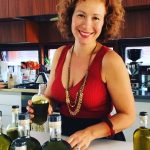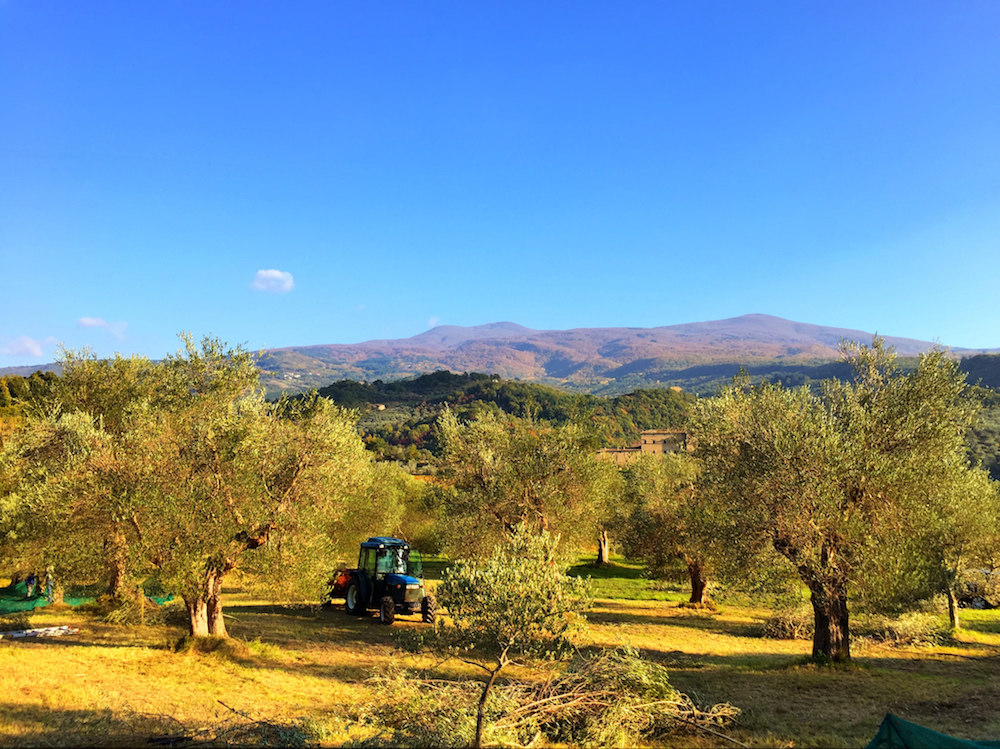How can there be such a variance in cost, isn’t olive oil all the same?
Let’s face it, olive oil culture is something new for North Americans, just as wine was long ago. Well, not that long ago if you happen to be born before 1980 and can remember when people still smoked in restaurants and wine lists were really only something that high-end establishments offered; For the rest, it was a choice of white or red. Now, even the smallest bistro has a carefully thought-out wine list. Olive oil trends are quickly following suit.
When I took a course on olive oil at the International Culinary Centre in NYC in 2016, we had chefs integrated into the curriculum to show us how there were using olive oils at a Michelin star level. Just like different wines and vinegars compliment food in varying ways, so do different olive cultivars. So, why and how are these oils so different and why should people pay upwards of $30 a bottle when they can buy olive oil at the grocery store for $10?
Well, I’m going to try to break it down for you, in point form. Just like cheese, wine, and other boutique products that command higher prices, olive oil has large degrees of quality based upon the following factors:
- Early harvest vs. later harvest oils. When it comes to extra virgin olive oils, this is something that greatly affects price. An early harvest oil is harvested when the fruit is still green and unripe, leading to a lower yield, but a more intense and condensed version of the oil. Naturally, as the fruit ripens, the yields increase and the price of oil goes down accordingly. It is said that early harvest oils are healthier as they have a higher concentration of polyphenols, the anti-carcinogenic compounds, sought for their health benefits.
- Harvest date. Freshness is one of the most important quality factors when it comes to olive oil. In this way, olive oil diverges from wine. It is a raw fruit fat that does not improve with age. This is, in part, because the polyphenols (the healthy antioxidants we look for in olive oil) break down as it gets older. This does not mean old oil will make you sick, it just means that it will no longer taste as good nor retain as many of its health benefits. Purchasing a fresh olive oil will always cost you top dollar. As they told us in New York, if you can’t find a harvest date, you really don’t know what you are buying, which leads me to my next point.
- Age of the oil. When you purchase that bottle of olive on at the grocery store for $10, you are most probably buying old oil or an oil that has been blended with an old or lesser quality oil. Old oil is not as valuable. Just like rotting food is discounted, and priced to sell, the same goes for olive oil. At my course in NYC, we tasted many mainstream olive oils that had been randomly purchased which upon analysis qualified as rancid. In fact, some consumers are so used to the taste of rancid oil, they actually prefer it!
- Blended or not. We’ve all heard about corruption in the olive oil world. Olive oil is a very difficult and costly product to extract, so there is a huge temptation to “bulk up” volumes by adding soybean oils or other cheaper oils to increase profits. This is not technically allowed, but there is a lot of suspicion that it is happening, especially when you know what real olive oil sells for at the source and see the pricing that some companies offer. If it’s too inexpensive, I would hesitate to consider it an authentic product.
- Acidity levels. This is a factor we consider when we get into higher-end olive oils. All olive oil that is free of defects and under the 0.8 acidity qualifies as extra virgin. Now, there is a big range within that context. At the mill they generally separate oil into grades of 0-0.3, 0.3-0.5, and 0.5-0.8 with the lowest acidity being the most valuable. If you can find an olive oil that has an acidity level of lower than 0.3, you will be paying top dollar for it.
- Location and age of trees. Again, here olive oil shares qualities with wine. Where the olives grow and how they grow has a huge impact upon quality and price. Do they grow wild in a valley, or on a mountain close to the sea, or are they farmed on flat land like many other commercial fruits? The highest quality olive oils are generally harvested from trees that draw minerality and water from their far-reaching roots, hence older trees often produce better fruit, or at least the folklore goes. Olives that must be accessed on foot and harvested by hand are the most precious of oils, and naturally very labour intensive to collect. Just like wine that is sourced from a vineyard blessed with perfect terroir, olive oils that come from [relatively] untouched and wild lands in the mountains or by the sea will command a higher price point.
- The skill of the mill. How it was produced, heat levels, skill, and quality of production is a very big factor and again, is similar to wine. Knowing exactly how to press the olives without sacrificing the quality of the oil is a very tricky business. Keeping heat levels well under 27 degrees celsius is just the beginning. This is where the science comes in. Some mills are cleaner than others, some producers are more skilled than others and will never sacrifice quality for profit. This choice will again be reflected in the price.
- How it was harvested. This is another important factor in quality. If you know anything about olive oil, you may have heard that as soon as the olives are picked, the oxidation process begins and therefore it is ideal to press your oil as soon as possible after harvest. Now, if you consider the logistics of climbing into a tree and harvested olives by hand, you can imagine that it takes some time to collect enough to bring to press. It takes about 45 minutes to collect enough olives to produce just one litre of oil. Think about that when you look at the price of your olive oil. Mechanical harvesting is certainly more time efficient and that is why the vast majority of producers use this method. The problem is, olives are more prone to bruising and oxidation when this occurs. Hand harvested and expediently pressed oil will always cost more.
Hopefully, this will help you understand why you should invest in a good olive oil. High quality olive oil production is a costly business, however, if you want to make sure that you are eating the freshest, healthiest olive oil possible, consider the factors above before you make your choice.
 Zoe Traiforos is a trained wine sommelier, food activist, and mother of three. She is also the owner and sole operator of Single Grove Imports, specializing in greek olive oils of distinction.
Zoe Traiforos is a trained wine sommelier, food activist, and mother of three. She is also the owner and sole operator of Single Grove Imports, specializing in greek olive oils of distinction.








